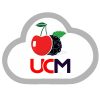Automated Calling Software: Revolutionizing Communication

In today’s fast-paced world, businesses are constantly seeking ways to streamline their operations and enhance their communication strategies. One such solution that has gained widespread popularity is automated calling software. This innovative technology offers a plethora of benefits, ranging from increased efficiency to improved customer engagement. In this article, we’ll delve into the world of Automated calling software, exploring its features, benefits, challenges, and future trends.
Introduction to Automated Calling Software
Automated calling software, also known as autodialer software, is a communication tool that enables businesses to automate the process of making outbound calls to customers or prospects. It utilizes pre-recorded messages or interactive voice response (IVR) systems to deliver information or gather responses from recipients. The primary goal of automated calling software is to streamline communication processes and optimize resource utilization.
Benefits of Automated Calling Software
Time and Cost Efficiency
One of the most significant advantages of automated calling software is its ability to save time and resources for businesses. By automating the process of dialing phone numbers and delivering messages, organizations can significantly reduce the time and effort required for manual calling tasks.
Increased Productivity
Automated calling software allows businesses to reach a large number of contacts in a short amount of time, thereby increasing productivity and efficiency. This enables sales and marketing teams to focus their efforts on high-value activities, such as closing deals or nurturing leads.
Improved Customer Engagement
With features like personalized messages and targeted campaigns, automated calling software can help businesses enhance their customer engagement efforts. By delivering relevant and timely messages to recipients, organizations can foster stronger relationships with their audience and drive better results.
Features of Automated Calling Software
Automated calling software offers a range of features designed to streamline communication processes and enhance effectiveness. Some of the key features include:
Call Scheduling
Automated calling software allows users to schedule calls at specific times and dates, ensuring that messages are delivered at optimal times for maximum impact.
Customizable Scripts
Users can create and customize scripts for their automated calls, allowing them to tailor messages to suit their audience and objectives.
Call Tracking and Analytics
Automated calling software provides comprehensive analytics and reporting tools, allowing users to track the performance of their campaigns and gain valuable insights into recipient behavior.
Types of Automated Calling Software
There are several types of automated calling software available, each with its own unique features and capabilities. Some of the most common types include:
Robocalling
Robocalling involves the use of pre-recorded messages to deliver information or promotions to a large number of recipients simultaneously.
Voice Broadcasting
Voice broadcasting allows businesses to send out automated messages to contacts using a combination of pre-recorded audio and text-to-speech technology.
Interactive Voice Response (IVR)
IVR systems enable businesses to create interactive phone menus that guide callers through a series of prompts and options, allowing them to access information or complete tasks without speaking to a live agent.
Industries Utilizing Automated Calling Software
Automated calling software is utilized across a wide range of industries, each leveraging its capabilities to achieve specific objectives. Some of the industries that commonly use automated calling software include:
Telemarketing and Sales
Automated calling software is widely used in telemarketing and sales to deliver promotional messages, generate leads, and facilitate customer outreach efforts.
Healthcare
In the healthcare industry, automated calling software is used for appointment reminders, medication adherence programs, and patient surveys.
Customer Service
Many businesses use automated calling software to provide customers with automated support and assistance, such as account balance inquiries or order status updates.
Factors to Consider When Choosing Automated Calling Software
When selecting automated calling software for your business, it’s essential to consider several factors to ensure that you choose the right solution for your needs. Some key considerations include:
Scalability
Ensure that the software can scale to accommodate your growing business needs and handle increasing call volumes efficiently.
Integration Capabilities
Choose a solution that integrates seamlessly with your existing systems and workflows, such as CRM software or marketing automation platforms.
Compliance with Regulations
Ensure that the software complies with relevant regulations and guidelines, such as the Telephone Consumer Protection Act (TCPA) or the General Data Protection Regulation (GDPR).
Challenges and Concerns with Automated Calling Software
While automated calling software offers many benefits, it also poses certain challenges and concerns that businesses need to be aware of. Some of the most common challenges include:
Regulatory Compliance
Businesses must ensure that their use of automated calling software complies with applicable regulations to avoid fines and legal consequences.
Potential for Misuse
There is a risk that automated calling software may be misused for spamming or scamming purposes, leading to negative consequences for both businesses and recipients.
Impact on Customer Experience
Poorly executed automated calling campaigns can have a negative impact on the customer experience, leading to complaints and dissatisfaction among recipients.
Best Practices for Implementing Automated Calling Software
To maximize the effectiveness of automated calling software and minimize potential risks, businesses should follow best practices when implementing and managing their campaigns. Some key best practices include:
Obtaining Consent
Obtain consent from recipients before initiating automated calls and ensure that you comply with relevant opt-in and opt-out requirements.
Personalization and Targeting
Personalize your messages and target them to specific audience segments to increase relevance and engagement.
Monitoring and Optimizing Campaigns
Regularly monitor the performance of your automated calling campaigns and make adjustments as needed to optimize results and improve ROI.
Case Studies
To illustrate the benefits and effectiveness of automated calling software, let’s take a look at some real-world case studies:
Successful Implementations
Several businesses have successfully implemented automated calling software to streamline their communication processes and achieve their business objectives.
Lessons Learned
By examining the experiences of other businesses, organizations can gain valuable insights into best practices and pitfalls to avoid when implementing automated calling software.
Future Trends in Automated Calling Software
Looking ahead, several trends are shaping the future of automated calling software and driving innovation in the industry. Some of the key trends to watch out for include:
AI Integration
The integration of artificial intelligence (AI) technology is enabling more advanced capabilities, such as natural language processing and sentiment analysis, to enhance the effectiveness of automated calling campaigns.
Enhanced Personalization
Advances in data analytics and machine learning are enabling businesses to deliver more personalized and targeted messages through automated calling software, increasing engagement and conversion rates.
Multi-Channel Automation
Businesses are increasingly adopting multi-channel communication strategies that integrate automated calling with other channels, such as SMS, email, and chatbots, to create seamless omnichannel experiences for customers.
Conclusion
Automated calling software is revolutionizing the way businesses communicate with their customers and prospects, offering a range of benefits, including increased efficiency, improved productivity, and enhanced customer engagement. By understanding the features, benefits, and best practices associated with automated calling software, businesses can leverage this innovative technology to achieve their communication objectives and drive better results.
FAQs
-
How does automated calling software improve efficiency? Automated calling software streamlines communication processes by automating outbound calls, saving time and resources for businesses.
-
Are there legal regulations regarding the use of automated calling software? Yes, businesses must comply with regulations such as the Telephone Consumer Protection Act (TCPA) and the General Data Protection Regulation (GDPR) when using automated calling software.
-
Can automated calling software be integrated with other communication channels? Yes, many automated calling software solutions offer integration capabilities with other channels such as SMS, email, and chatbots to create seamless omnichannel experiences.
-
What are some common industries that benefit from automated calling software? Industries such as telemarketing and sales, healthcare, and customer service commonly use automated calling software to streamline communication processes and enhance customer engagement.
-
How can businesses ensure compliance when using automated calling software? Businesses can ensure compliance by obtaining consent from recipients before initiating automated calls and adhering to relevant regulations and guidelines regarding opt-in and opt-out requirements.

